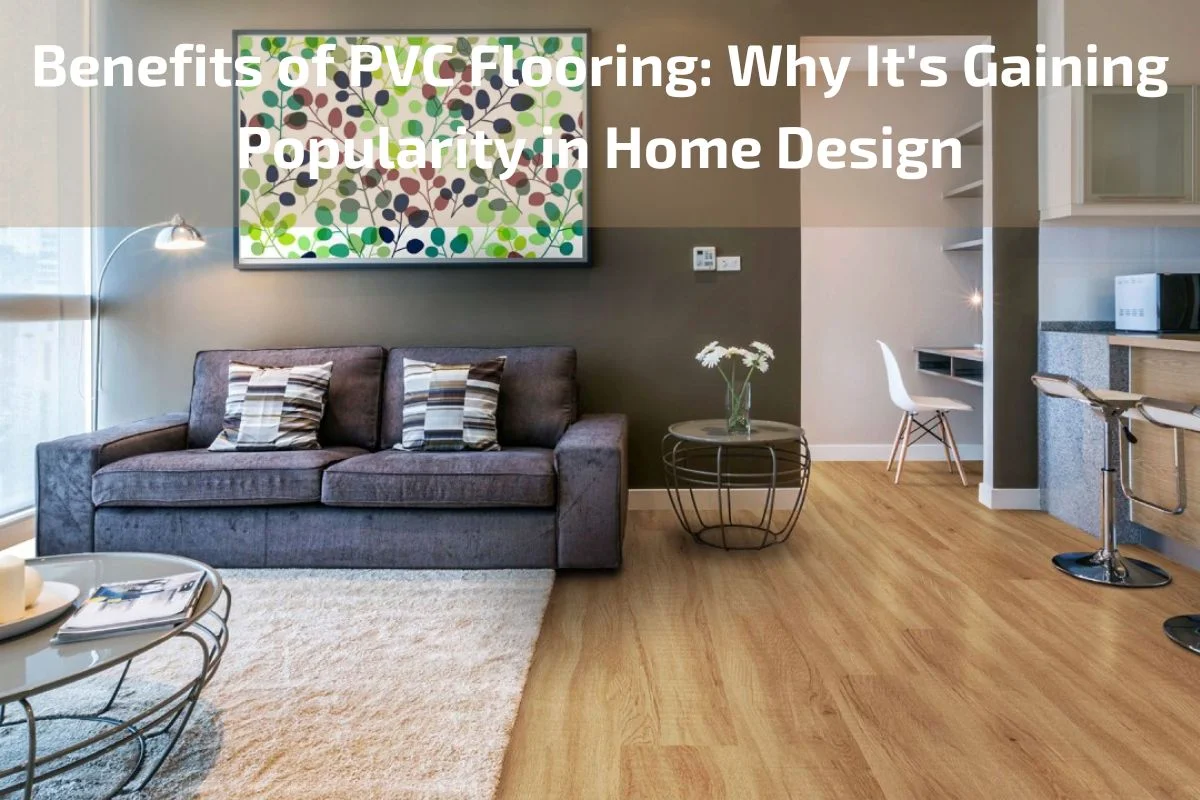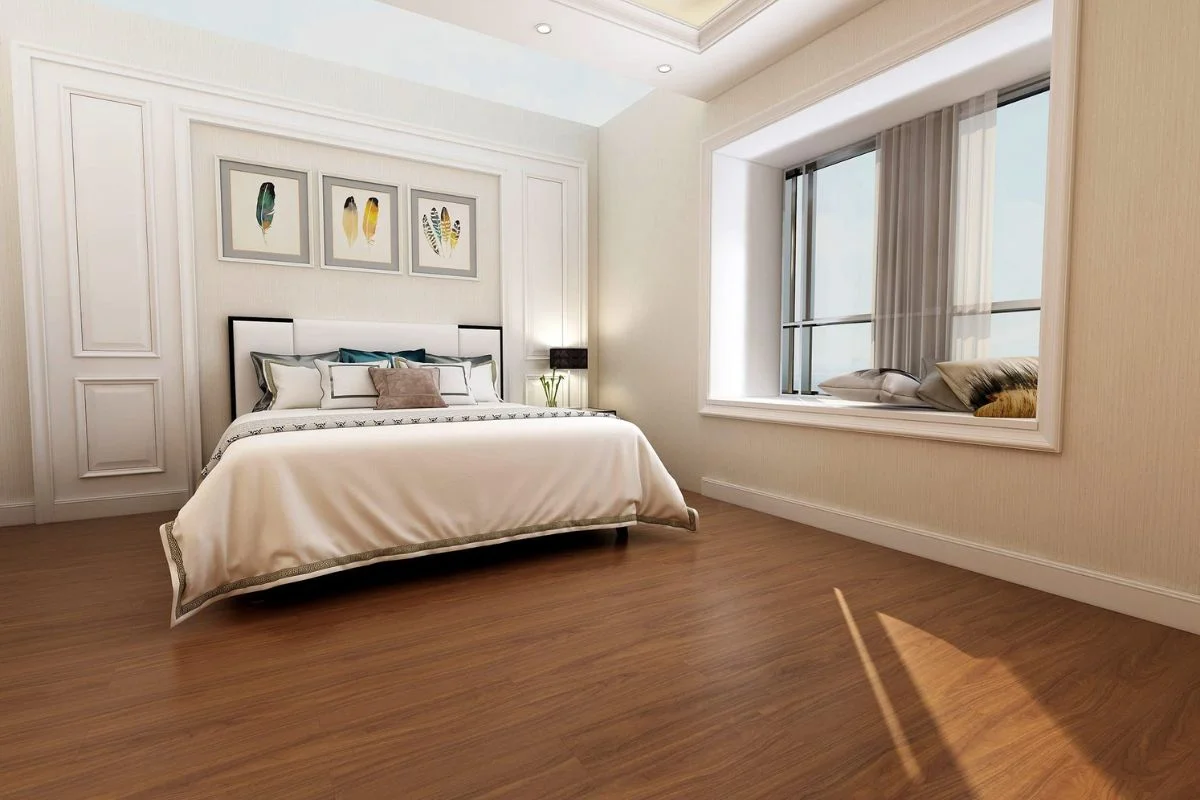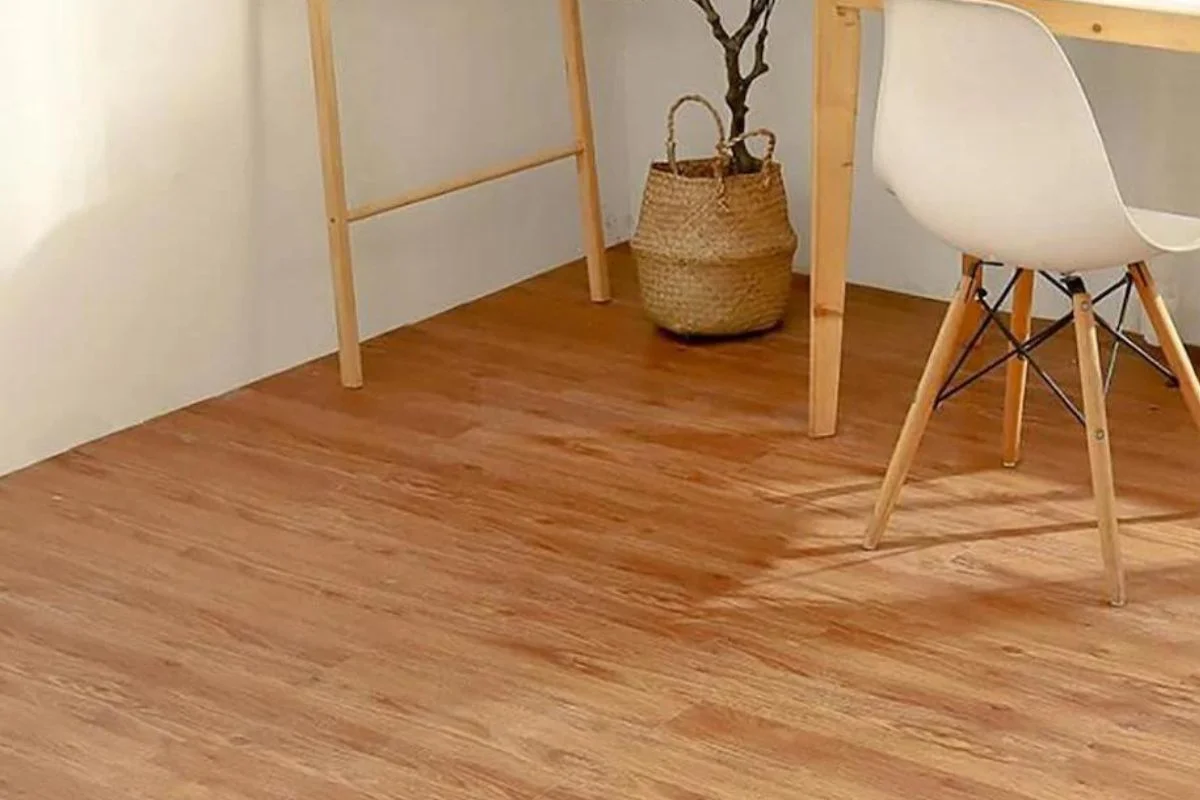
In recent years, PVC flooring has emerged as a popular choice in home design, prized for its versatility, durability, and affordability. Also known as vinyl flooring, PVC (polyvinyl chloride) flooring offers a range of benefits that make it an attractive option for homeowners seeking a practical and stylish flooring solution. From its wide array of design options to its ease of installation and low maintenance requirements, PVC flooring has become a go-to choice for those looking to enhance the aesthetics and functionality of their living spaces.
In this exploration of the benefits of PVC flooring, we’ll delve into the reasons why it’s gaining popularity in home design. From its resilience to moisture and wear to its ability to mimic natural materials like wood and stone, PVC flooring offers numerous advantages that appeal to homeowners and designers alike.
What is PVC Flooring?
PVC flooring, short for Polyvinyl Chloride flooring, is a type of resilient flooring material made from a synthetic polymer called PVC. It is commonly referred to as vinyl flooring. PVC flooring is composed of several layers, including a backing layer, a core layer, a printed design layer, and a protective wear layer.
The backing layer provides stability and support, while the core layer, often made of PVC foam, offers cushioning and resilience. The printed design layer features realistic patterns, colors, and textures that mimic various natural materials such as wood, stone, or tile. The protective wear layer, typically made of urethane or other clear coatings, helps protect the flooring from scratches, stains, and wear, while also providing additional durability.
PVC flooring comes in various formats, including vinyl sheets, vinyl tiles, and luxury vinyl planks (LVP) or tiles (LVT). It is known for its durability, water resistance, easy maintenance, and versatility in design options. PVC flooring is commonly used in residential, commercial, and industrial settings due to its affordability, aesthetics, and practicality.
Definition and composition of PVC flooring
PVC flooring, also known as polyvinyl chloride flooring or vinyl flooring, is a type of synthetic flooring material composed primarily of polyvinyl chloride, a type of plastic polymer. It typically consists of several layers that work together to provide durability, resilience, and aesthetic appeal.
The composition of PVC flooring typically includes the following layers:
Backing Layer: The bottom layer of PVC flooring provides stability and support. It is usually made of felt, fiberglass, or foam to enhance the flooring’s dimensional stability and comfort underfoot.
Core Layer: The core layer of PVC flooring, also known as the core or substrate, is responsible for providing strength and rigidity to the flooring. It is typically made of a dense PVC foam or solid PVC material, which contributes to the flooring’s durability and resistance to indentation.
Printed Design Layer: The printed design layer of PVC flooring features realistic patterns, colors, and textures that mimic various natural materials such as wood, stone, or tile. This layer is created using advanced printing technologies, allowing for highly detailed and lifelike designs.
Wear Layer: The wear layer is the topmost layer of PVC flooring and serves as a protective barrier against scratches, stains, and wear. It is typically made of clear PVC or urethane coatings that provide added durability and resistance to abrasion, making the flooring easier to clean and maintain.
Different types of PVC flooring
There are several different types of PVC flooring available in the market, each offering unique features, benefits, and applications. Some common types of PVC flooring include:
Vinyl Sheet Flooring: Vinyl sheet flooring comes in large rolls and is typically installed as a single continuous piece, making it ideal for covering large areas with minimal seams. It is available in a variety of styles, colors, and patterns, including wood, stone, and tile designs. Vinyl sheet flooring is known for its durability, water resistance, and affordability.
Vinyl Tile Flooring: Vinyl tile flooring consists of individual tiles that are usually square or rectangular in shape. These tiles can mimic the look of natural materials such as ceramic tile, stone, or hardwood. Vinyl tiles are available in a range of sizes, colors, and patterns, allowing for endless design possibilities. They are easy to install and maintain, making them a popular choice for residential and commercial applications.
Luxury Vinyl Plank (LVP) Flooring: Luxury vinyl plank flooring, also known as LVP flooring, replicates the look and texture of hardwood planks. It consists of individual planks that are typically installed using a click-lock or glue-down method. LVP flooring offers the warmth and beauty of hardwood flooring without the drawbacks of moisture sensitivity or high maintenance. It is highly durable, scratch-resistant, and suitable for high-traffic areas.
Luxury Vinyl Tile (LVT) Flooring: Luxury vinyl tile flooring, or LVT flooring, mimics the appearance of natural stone or ceramic tile. Like LVP flooring, it consists of individual tiles that can be installed using a variety of methods, including glue-down, loose-lay, or click-lock installation. LVT flooring offers the look of authentic tile flooring with added benefits such as durability, easy maintenance, and warmth underfoot.
Homogeneous PVC Flooring: Homogeneous PVC flooring is a type of solid vinyl flooring that features a uniform composition throughout the entire thickness of the material. It is highly durable, hygienic, and resistant to stains, making it suitable for commercial and industrial applications where durability and cleanliness are paramount.
Advantages of and Disadvantages PVC Flooring
Advantages of PVC Flooring:
Durability: PVC flooring is highly durable and resistant to scratches, stains, and wear, making it suitable for high-traffic areas in both residential and commercial settings.
Water Resistance: PVC flooring is inherently waterproof, making it an ideal choice for moisture-prone areas such as kitchens, bathrooms, and basements.
Easy Maintenance: PVC flooring is easy to clean and maintain, requiring only regular sweeping, mopping, or vacuuming to keep it looking new. Spills and stains can be easily wiped away with a damp cloth.
Versatility: PVC flooring comes in a wide range of styles, colors, and patterns, allowing homeowners and designers to achieve virtually any look or aesthetic, from hardwood and stone to tile and geometric designs.
Comfort: PVC flooring provides a cushioned feel underfoot, offering greater comfort and support compared to hard flooring materials such as tile or concrete.
Affordability: PVC flooring is generally more affordable than natural materials such as hardwood or stone, making it a cost-effective option for budget-conscious homeowners.
Disadvantages of PVC Flooring:
Environmental Concerns: PVC flooring is made from synthetic materials derived from fossil fuels, raising environmental concerns related to production, disposal, and potential off-gassing of volatile organic compounds (VOCs).
Not Biodegradable: PVC flooring is not biodegradable and can contribute to landfill waste when disposed of at the end of its lifespan.
Susceptibility to Heat Damage: PVC flooring can be susceptible to heat damage, such as scorching or melting, if exposed to high temperatures or direct sunlight for prolonged periods.
Vulnerability to Sharp Objects: While PVC flooring is durable, it can still be punctured or damaged by sharp objects such as high heels or furniture legs if not properly protected.
Limited Repair Options: Unlike natural materials such as hardwood or tile, PVC flooring cannot be refinished or repaired if damaged. In cases of significant damage, the affected area may need to be replaced entirely.
Not Suitable for Outdoor Use: PVC flooring is designed for indoor use only and is not recommended for outdoor applications due to its susceptibility to UV damage and extreme weather conditions.
Installation Process of PVC Flooring
The installation process of PVC flooring involves several steps to ensure a successful and long-lasting result. Here’s a general overview of the installation process for PVC flooring:
Preparation: Before installation, ensure that the subfloor is clean, dry, and level. Remove any existing flooring materials, adhesive residue, or debris. Repair any cracks, holes, or uneven areas in the subfloor as needed.
Acclimation: Allow the PVC flooring materials to acclimate to the room’s temperature and humidity levels for a minimum of 24-48 hours before installation. This helps prevent expansion or contraction of the flooring materials after installation.
Layout Planning: Plan the layout of the PVC flooring to ensure a balanced and aesthetically pleasing installation. Consider the direction of the planks or tiles, as well as any pattern or design variations.
Cutting: Measure and cut the PVC flooring materials to fit the dimensions of the room, using a utility knife, straightedge, and cutting mat as needed. Leave a small gap around the perimeter of the room to allow for expansion and contraction.
Adhesive Application: Apply a suitable adhesive to the subfloor using a trowel, following the manufacturer’s instructions. Spread the adhesive evenly over the subfloor, working in small sections to ensure proper coverage.
Installation: Begin installing the PVC flooring materials, starting from one corner of the room and working your way across the floor. Press the planks or tiles firmly into the adhesive, ensuring a tight bond and smooth surface. Use a roller or hand press to firmly seat the flooring materials and remove any air bubbles or wrinkles.
Seaming: If installing vinyl sheets or tiles, seam the edges together using a heat-welding technique or adhesive tape to create a seamless appearance. Ensure that the seams are tight and properly aligned to prevent moisture infiltration.
Finishing Touches: Once the PVC flooring is installed, trim any excess material around the edges of the room using a utility knife or trimmer. Install transition strips or moldings as needed to cover gaps and provide a clean, finished look.
Cleanup: Clean any adhesive residue or debris from the surface of the PVC flooring using a damp cloth or mop. Allow the adhesive to cure fully according to the manufacturer’s recommendations before allowing foot traffic or placing furniture on the floor.
Final Inspection: Inspect the installed PVC flooring for any defects, gaps, or imperfections. Make any necessary touch-ups or repairs as needed to ensure a flawless finish.
Maintenance and Care Tips
Maintaining and caring for PVC flooring is relatively easy, but regular upkeep is essential to ensure its longevity and keep it looking its best. Here are some maintenance and care tips for PVC flooring:
Daily Cleaning: Sweep or vacuum the PVC flooring regularly to remove dust, dirt, and debris. Use a soft-bristled broom or vacuum with a brush attachment to prevent scratching the surface.
Spot Cleaning: Immediately clean up spills and stains to prevent them from setting into the flooring. Use a damp cloth or mop with a mild detergent solution to gently wipe away spills, avoiding harsh chemicals or abrasive cleaners that may damage the surface.
Deep Cleaning: Periodically deep clean the PVC flooring to remove embedded dirt and grime. Use a neutral pH cleaner specifically formulated for vinyl flooring, following the manufacturer’s instructions. Avoid using excessive water or steam cleaners, as they can damage the flooring over time.
Avoid Scratches: Place felt pads or protective mats under heavy furniture legs to prevent scratches and indentations on the PVC flooring. Avoid dragging furniture or sharp objects across the floor, as they can cause permanent damage.
Protective Measures: Use doormats at entryways to trap dirt and moisture before it reaches the PVC flooring. Place rugs or mats in high-traffic areas and under kitchen sinks to provide additional protection against wear and tear.
Avoid Excessive Moisture: While PVC flooring is waterproof, excessive moisture can still seep into seams and edges, causing damage over time. Wipe up spills promptly and avoid using excessive water during cleaning.
Avoid Harsh Chemicals: Avoid using abrasive cleaners, bleach, ammonia, or solvent-based products on PVC flooring, as they can damage the surface and cause discoloration. Stick to mild detergents and cleaners specifically formulated for vinyl flooring.
Regular Inspections: Periodically inspect the PVC flooring for signs of damage, such as scratches, cuts, or tears. Make any necessary repairs or replacements to prevent further damage and maintain the integrity of the flooring.
Protect from Sunlight: Direct sunlight can cause fading and discoloration of PVC flooring over time. Use blinds, curtains, or UV-blocking window film to protect the flooring from prolonged exposure to sunlight.
Professional Maintenance: Consider hiring a professional floor cleaning service for periodic deep cleaning and maintenance of PVC flooring, especially in high-traffic areas or commercial settings.
Conclusion
In conclusion, maintaining PVC flooring is relatively simple and straightforward with regular cleaning and proper care. By following the maintenance tips outlined above, you can preserve the beauty and durability of your PVC flooring for years to come.



